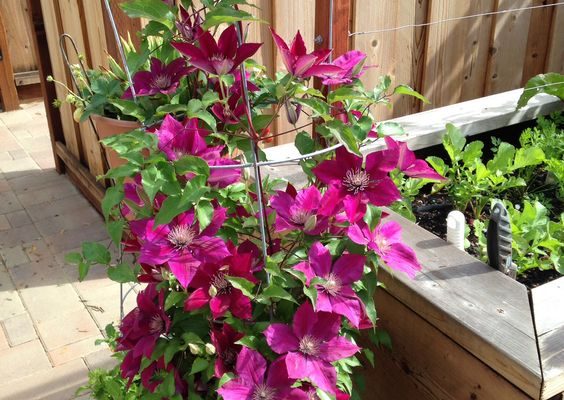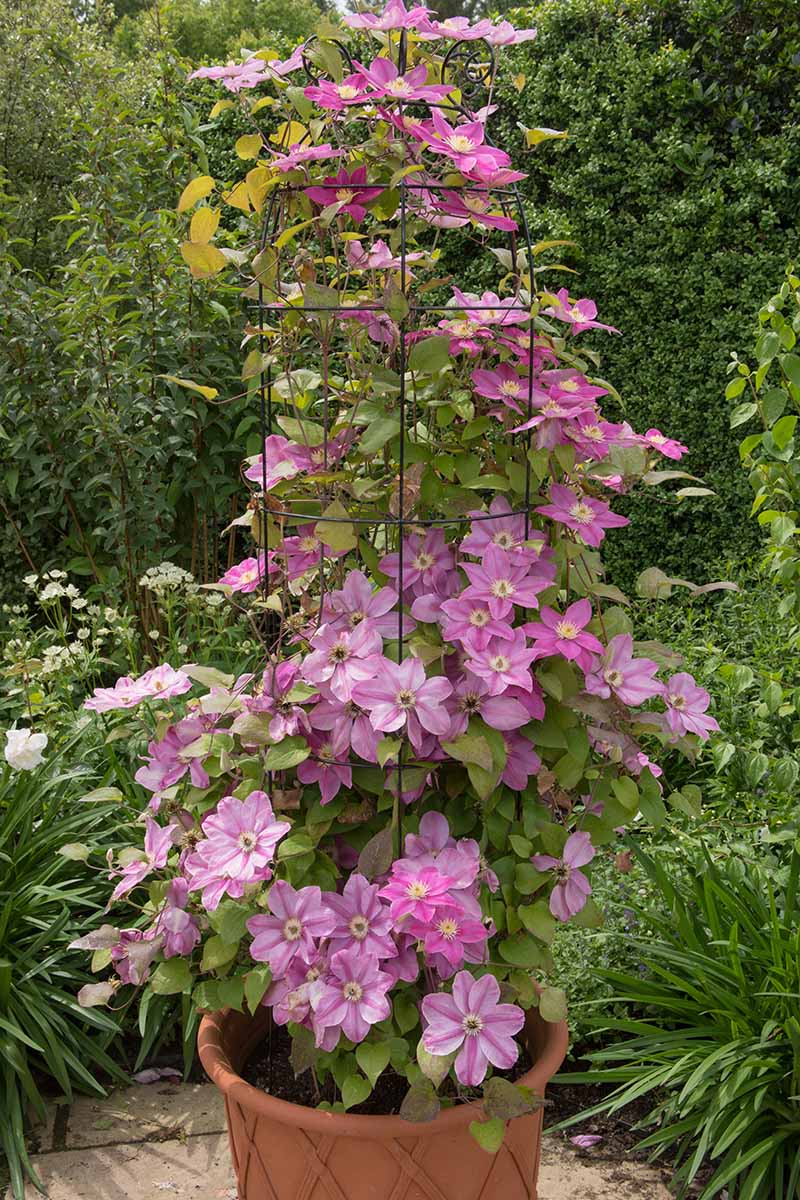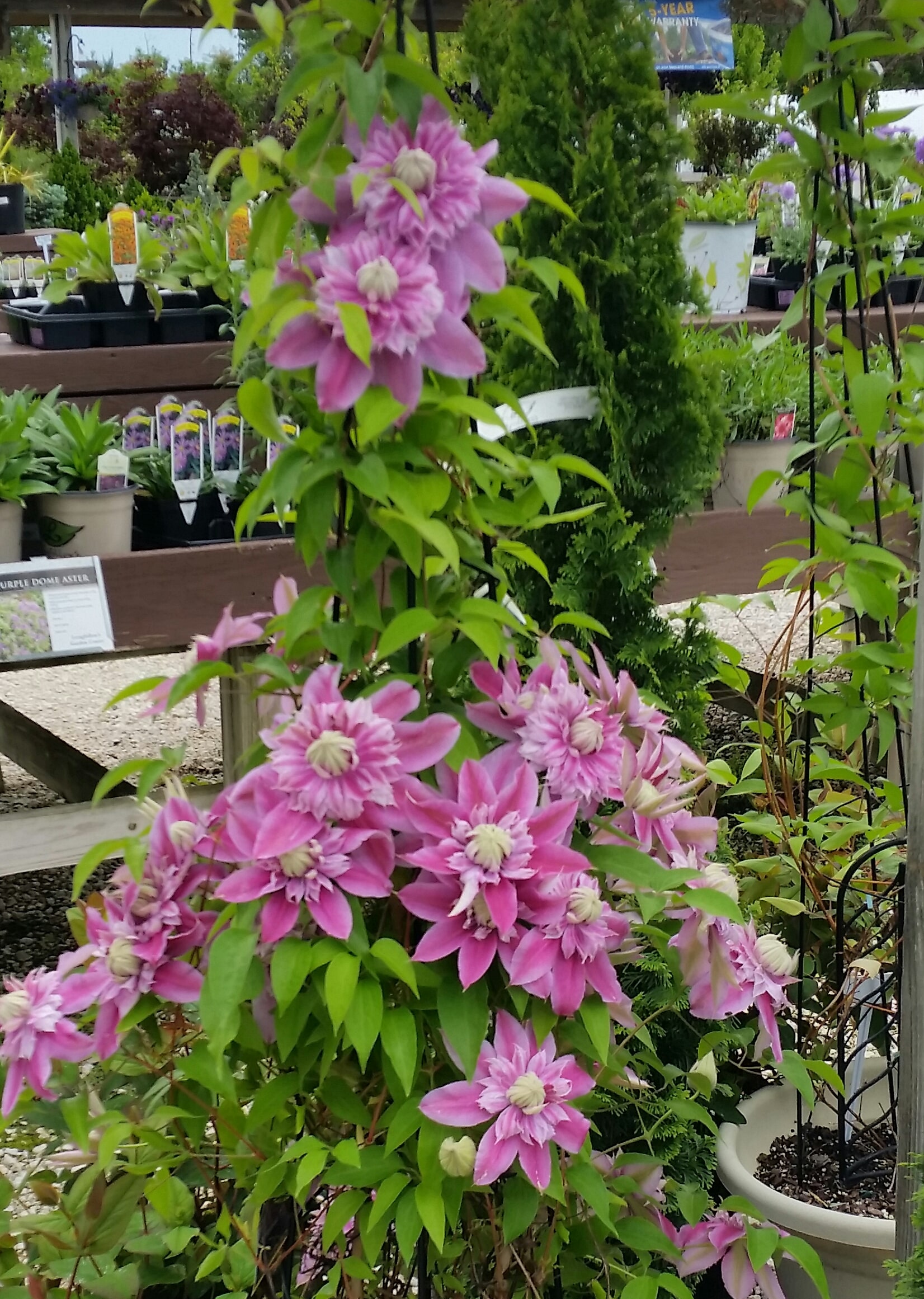Why Choose Container Gardening for Clematis?
When it comes to growing clematis, many gardeners wonder, can you grow clematis in a pot? The answer is a resounding yes Container gardening offers a unique set of benefits that make it an ideal choice for growing clematis. One of the primary advantages is flexibility – with pots, you can easily move your clematis to different locations to optimize sunlight and temperature conditions. This flexibility is particularly useful for clematis, which can be sensitive to extreme weather conditions. Additionally, container gardening allows for better soil control, enabling you to tailor the soil mix to your clematis’s specific needs. This is especially important for clematis, which prefers well-draining soil with a slightly acidic pH. By growing clematis in a pot, you can ensure that your plant receives the perfect balance of nutrients and moisture. Furthermore, container gardening is a great space-saving solution for small gardens or balconies, allowing you to enjoy the beauty of clematis even in limited spaces.
Understanding Clematis Needs: A Guide to Container Selection
When it comes to growing clematis in pots, selecting the right container is crucial for the plant’s success. The ideal container for clematis should provide adequate space for the roots to grow, while also ensuring good drainage and aeration. A minimum depth of 12-18 inches is recommended, with a width that is at least 2-3 times the width of the plant’s root ball. In terms of material, ceramic or terra cotta pots are good options, as they allow for better air circulation and moisture regulation. Avoid using plastic or metal containers, as they can retain too much heat and moisture, leading to root rot. Additionally, make sure the container has drainage holes in the bottom to prevent waterlogged soil. By choosing the right container, you can create an optimal environment for your clematis to thrive. Remember, can you grow clematis in a pot? Yes, and with the right container, you can enjoy beautiful blooms and healthy growth.
How to Provide Optimal Conditions for Pot-Grown Clematis
Providing the right conditions for clematis in pots is crucial for healthy growth and blooming. One of the most important factors is sunlight. Clematis requires at least 6 hours of direct sunlight per day, but can tolerate partial shade. When choosing a location for your pot, ensure it receives the right amount of sunlight. Watering is also critical, as clematis prefers moist but well-draining soil. Check the soil daily, and water only when the top inch of soil feels dry to the touch. Avoid overwatering, which can lead to root rot. In terms of nutrients, clematis benefits from regular fertilization. Use a balanced, water-soluble fertilizer during the growing season, and a high-potassium fertilizer during the blooming season. Pruning is also essential for promoting healthy growth and encouraging blooming. Prune your clematis in late winter or early spring, removing any dead or damaged stems. By providing the right amount of sunlight, water, and nutrients, you can create an optimal environment for your clematis to thrive. Remember, can you grow clematis in a pot? Yes, and with the right conditions, you can enjoy beautiful blooms and healthy growth.
Selecting the Right Clematis Variety for Container Gardening
When it comes to growing clematis in pots, selecting the right variety is crucial for success. Not all clematis varieties are suitable for container gardening, but there are many compact, dwarf, and trailing varieties that thrive in pots. Compact varieties, such as ‘Blue Angel’ and ‘Pink Fantasy’, are ideal for small containers and produce large, showy flowers. Dwarf varieties, like ‘Clematis alpina’ and ‘Clematis macropetala’, are perfect for larger containers and provide a profusion of smaller flowers. Trailing varieties, such as ‘Clematis viticella’ and ‘Clematis texensis’, are great for hanging baskets or tall containers and produce long, flowing stems. When choosing a clematis variety for container gardening, consider the mature size of the plant, its growth habits, and its flowering period. By selecting the right variety, you can create a stunning display of color and beauty in your container garden. Remember, can you grow clematis in a pot? Yes, and with the right variety, you can enjoy beautiful blooms and healthy growth all season long.
Soil and Compost: The Key to Healthy Clematis Growth in Pots
When it comes to growing clematis in pots, the quality of the soil and compost is crucial for healthy growth and blooming. A well-draining potting mix is essential to prevent waterlogged soil, which can lead to root rot and other problems. A mix specifically designed for containers, with a blend of peat moss, vermiculite, and perlite, will provide the right balance of moisture retention and drainage. Adding compost to the potting mix will provide essential nutrients and improve the soil’s structure. Look for a high-quality, slow-release compost that is rich in organic matter. When creating your own potting mix, combine 2 parts peat moss with 1 part vermiculite and 1 part perlite. Add a 2-inch layer of compost to the bottom of the pot, followed by the potting mix. This will provide a nutrient-rich environment for your clematis to thrive. By using the right soil and compost, you can create an ideal environment for your clematis to grow and bloom beautifully in its pot. Remember, can you grow clematis in a pot? Yes, and with the right soil and compost, you can enjoy healthy growth and stunning blooms all season long.
Common Challenges and Solutions for Growing Clematis in Containers
While growing clematis in pots can be a rewarding experience, it’s not without its challenges. One of the most common issues is pests, such as aphids, whiteflies, and spider mites. To prevent infestations, inspect your plants regularly and treat any infestations promptly. Another common problem is root bound, which can occur when the roots outgrow the container. To prevent this, repot your clematis every 2-3 years in the spring, using a slightly larger pot and fresh potting mix. Nutrient deficiencies can also occur, particularly if the potting mix is depleted of essential nutrients. Fertilize your clematis regularly, using a balanced, water-soluble fertilizer. Diseases, such as powdery mildew and leaf spot, can also affect clematis in pots. To prevent these, ensure good air circulation, water carefully, and remove any infected leaves or stems. By being aware of these common challenges and taking preventative measures, you can overcome them and enjoy healthy, thriving clematis in your pots. Remember, can you grow clematis in a pot? Yes, and with the right care and attention, you can overcome any challenges that may arise.
Designing a Stunning Container Garden with Clematis
When it comes to creating a beautiful container garden featuring clematis, the possibilities are endless. One of the key elements to consider is companion planting. Choose plants that complement the clematis in terms of color, texture, and growth habits. For example, pair a compact clematis variety with a trailing ivy or a flowering annual like petunias. Consider the design principles of balance, contrast, and harmony when selecting plants and arranging them in the container. A well-designed container garden can add visual interest and beauty to any outdoor space. Remember, can you grow clematis in a pot? Yes, and with a little creativity, you can create a stunning container garden that showcases these beautiful flowers. To add an extra layer of interest, incorporate different textures and colors of containers, or add decorative elements like trellises or obelisks. By following these design principles and tips, you can create a breathtaking container garden that showcases the beauty of clematis.
Maintenance and Care: Ensuring Long-Term Success with Pot-Grown Clematis
To ensure the long-term success of pot-grown clematis, regular maintenance and care are essential. One of the most critical tasks is pruning, which should be done annually to promote healthy growth and encourage blooming. Prune your clematis in late winter or early spring, removing any dead or damaged stems and shaping the plant to maintain its desired form. Repotting is also necessary every 2-3 years, as the roots can become pot-bound. Choose a slightly larger pot and fresh potting mix to give the roots room to grow. Winter care is also crucial, as clematis in pots are more susceptible to cold damage. Protect your plants from harsh winds and frost by moving them to a sheltered location or providing a layer of mulch. By following these maintenance and care tips, you can enjoy beautiful, thriving clematis in pots for years to come. Remember, can you grow clematis in a pot? Yes, and with proper care and attention, you can enjoy these stunning flowers in containers for years to come. Additionally, regular fertilization and monitoring for pests and diseases will help prevent common issues and ensure the continued health and beauty of your pot-grown clematis.








